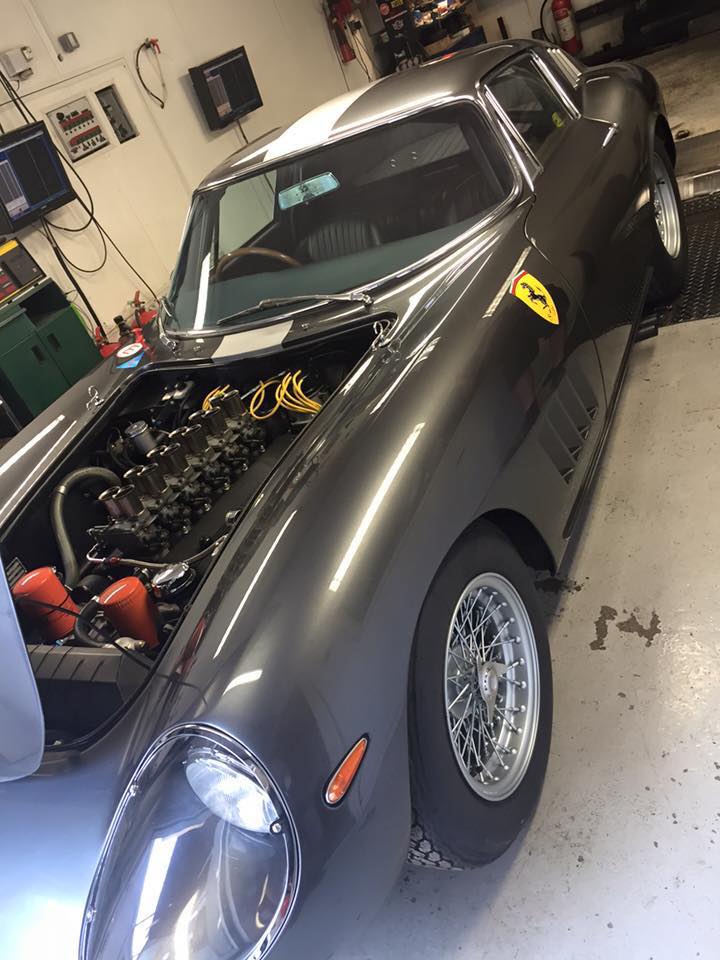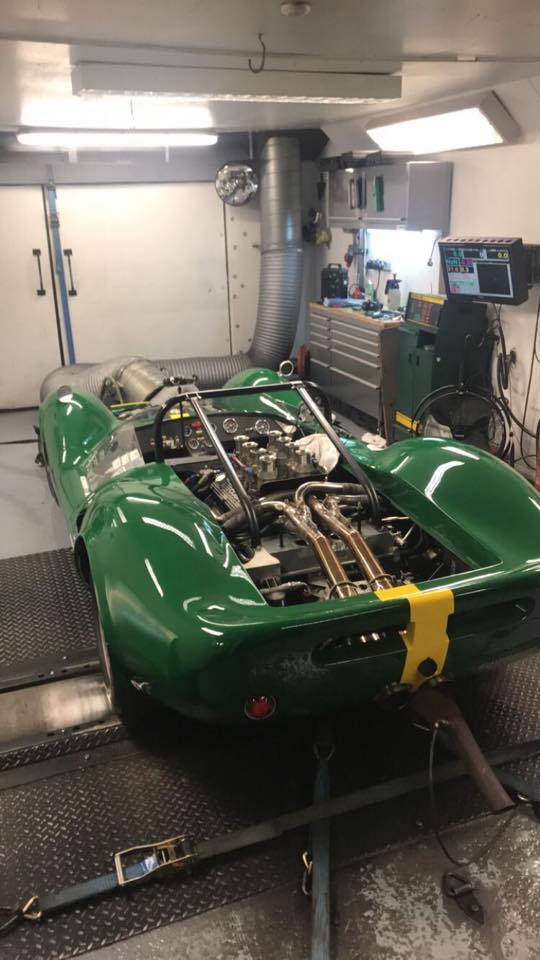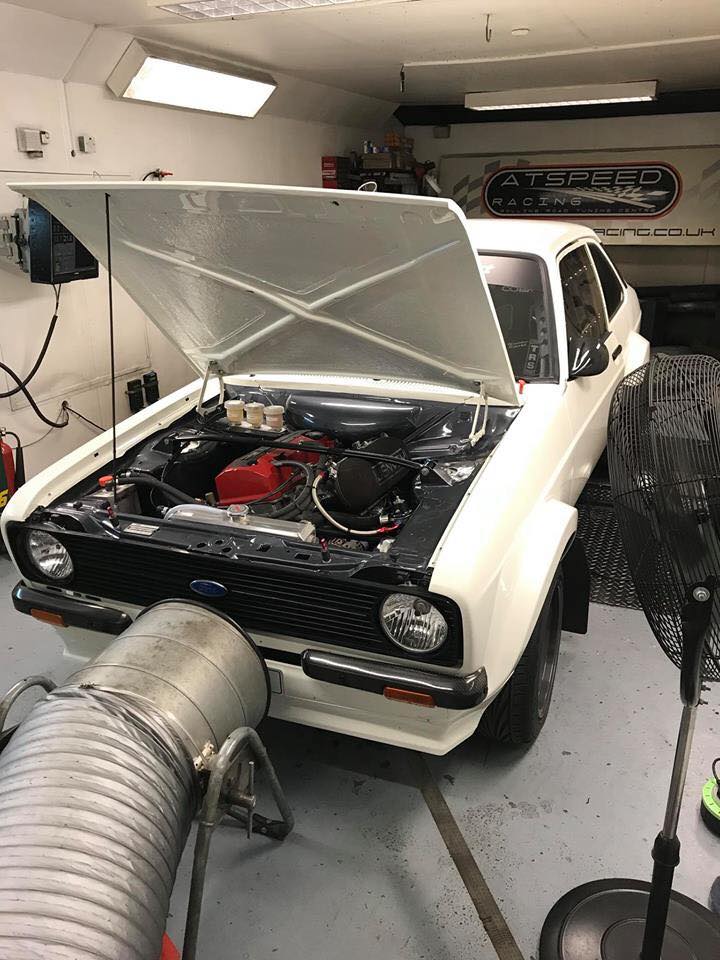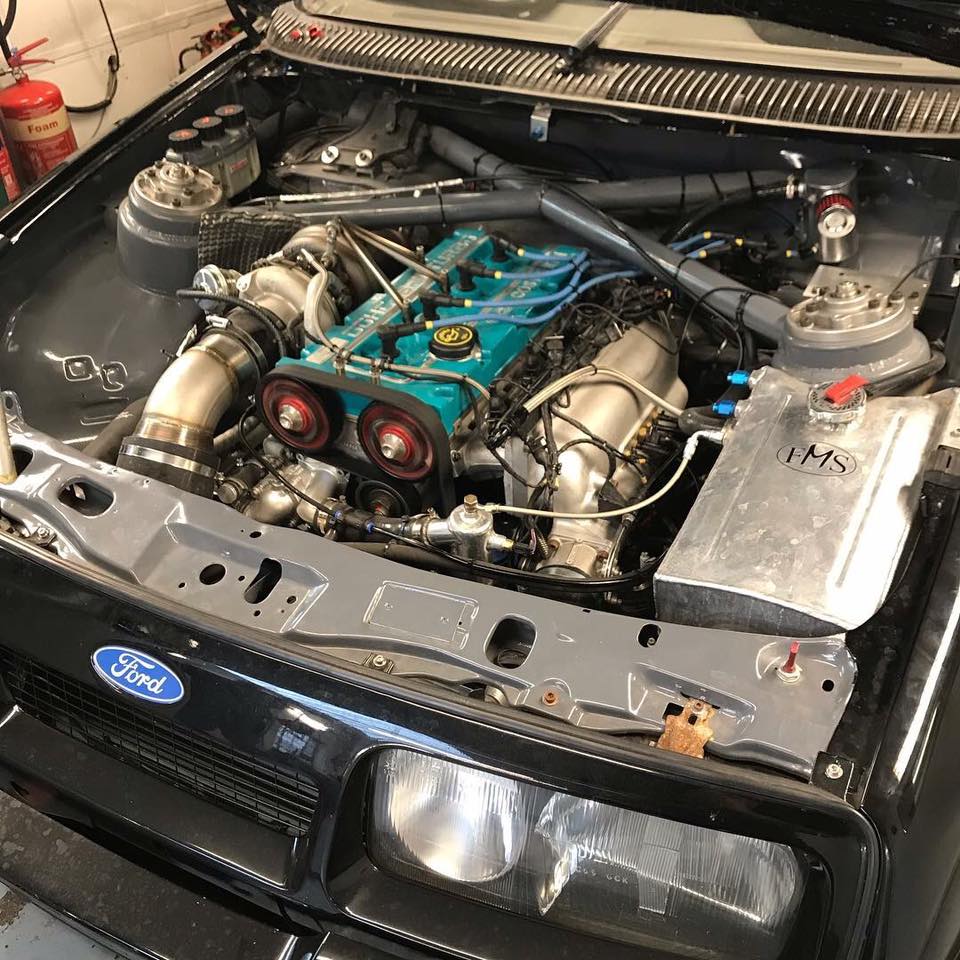The Ultimate Dyno Session Preparation Guide
A tuning session on a rolling road is a specialist service and charged at a premium rate, so of course we are often asked how long a Dyno session is likely to take, unfortunately that is very much a “how long is a piece of string” question as no two jobs are the same, not to mention the thousands of potential issues you may have to overcome during a typical tuning session on the rollers that can hold up the tuning procedure or lead to additional unforeseen expense.
With this guide we hope to offer some helpful advice and tips on how to make sure your time spent on the rolling road is as efficient as possible, and of course it’s not just preparation for the rolling road, most is good knowledge for car preparation in general, road or track. We will break this down into several sections, covering general preparation and checks, as well as carburettor specific and fuel injection specific checks, and include some key points too. Some will be very obvious, but believe me they are things we see very often, we appreciate not all the equipment is available to everyone to do these checks themselves, but hopefully wether you are an amateur or professional, this will make your experience on the rolling road a better one.

Fluids/Leaks: Oil, water, fuel, air. Any leak is an absolute no no on the Dyno, and thorough checks should be made before hand to make sure these systems are in good condition. Generally this is more an issue on “new builds” where in some cases the vehicle has not even been started before it arrives. If this is the case you can at minimum pressure test a cooling system or prime a fuel system to at least minimise some of these areas, intake systems can be checked for air leaks with a smoke pressure test, exhaust leaks in the same manner. The term “new” for most people is a good thing, for the engine tuner it sets the alarm bells ringing, “new” simply means “untested”.
Cooling system should be filled to the correct level, not overfilled as this will rapidly lead to excess coolant out the overflow during expansion, and a resulting Dyno clean up bill (antifreeze is a nightmare to clean up and goes a long way!) Make sure the cooling system is bled correctly and the radiator and hoses are in good order, a hose failure makes a big mess with hot pressurised engine coolant.
Make sure the oil is at the correct level. Some top up oil can be an idea to bring with you. The engine should be oil leak free – oil carries risks. Luckily we have had very few fires on the Dyno, and have been always able to act quickly without suffering any vehicle damage (we invest heavily in fire safety), but the ones we have had have ALL been caused from oil getting onto hot exhausts, often always from retro fitted oil coolers blowing pipes off, or overtightened adapters cracking, or oil pressure gauge oil lines leaking. If your engine is a fresh build and you plan on using the Dyno for break in procedure, it can be good practice to first use a break in oil and then change the oil and filter, so bring the necessary items with you. Oil breather system is another overlooked area, typically when these systems are modified and often catch cans with too smaller breather filters are used and the crankcase pressurises causing the engine to try and breathe through seals, resulting in oil leaks.
Perhaps the most common one…. Fuel. You would be surprised how many Dyno sessions are stopped due to running out of fuel. You will be using plenty of it! So make sure there is plenty in the tank, and if it’s a high power vehicle, in particular for mapping, bring extra! Importantly make sure you bring the correct fuel, by this we mean if your engine runs on 98 octane, make sure that’s what’s in the tank. It’s important to be fresh fuel too! Very often we find ourselves working with stale or contaminated fuel and running into problems, so if your vehicle has been stood a while, it can be a good idea to flush the system first and replace the filters.
Air leaks, although not a safety concern, do lead to lengthy diagnosis, especially on carburettors and intake manifolds, turbo boost leaks, split diaphragms, vacuum hoses etc. The easiest way to test this is with a smoke pressure test, or, although not as thorough, you can spray water around suspect leaky joints and listen if the engine note changes.

Electrics: electrical gremlins are a very common issue on the rolling road, and can lead to lengthy downtime trying to sort on the day, so preparation before hand is crucial and can be carried out with even the most basic of mechanical knowledge. Spark plugs of the correct grade and gap, ignition leads, and on older cars: coil, distributor cap, rotor arm – make sure they are all good, or if need be, it’s a good time to treat it all to fresh items anyway. It can also be very helpful to have an accurate TDC mark on the engine for set up of ignition timing or timing reference angles, and whilst on the subject of basic checks, tappet clearances set correctly.
Another important electrical factor is the battery, the engine may be started and stopped many times, so make sure the battery (and starter motor for that matter) are in good condition and fully charged. The charging system is an area that often leads to aborted Dyno sessions especially on fuel injection vehicles as battey voltage is crucial, a multi meter can be used to check battery voltage when running. Typically most vehicles should see around 14v when running. Make sure all engine earths and ecu grounds are to clean metal, or direct to the battery.
Fuel system: covered briefly above, the fuel system must be 100% leak free, with sufficient fuel, and be able to maintain fuel supply to the engine. If your engine is tuned beyond original spec, make sure the fuel system can cope with the demand, or upgraded accordingly. Fuel pumps, hose size, regulators, and injectors sized to suit. A common issue we encounter is inadequate or blocked fuel tank breathing where the fuel tank starts running in a vacuum and even implodes, pump cavitation occurs and fuel pressure drops.

Brakes: the brakes are not used on the rolling road as the Dyno has its own electronic brake to maintain speed or stop the vehicle, however a common issue we have is brakes seizing on, wether this be from faulty or seized sliders/callipers or more commonly improper set up of pedal boxes causing the brakes to become applied during heat expansion of the fluid, there should be slight free play in the pedal to allow for this.
Resonance and vibration: nuts and bolts will shake lose through vibration or heat changes, so make sure nuts and bolts are tight before arriving and are checked afterwards once cool. Exhaust manifolds, engine mounts, gearbox bolts are common ones here.
Tyres and Rotating parts: Speeds on the rolling road regularly exceed 100mph, so your vehicle needs to prepared to do so. Propshaft balance, wheel balance, buckled wheels etc can all cause problems. We have seen a handful of propshaft failures from improper installation of new yokes and bearings – make sure this is checked – when you have seen a 3” diameter propshaft folded up like a “Z” you will understand the forces involved.
A common issue in this area is driveshaft boot failures, or clips missing, or split boots causing a lot of mess in the Dyno cell and causing downtime and expensive cleanup, “stretchy” type replacement boots do not belong on a high performance or high speed vehicle and regularly fail on the Dyno, CV grease thrown around inside a clean room makes a lot of mess, and also a lot of mess to your car. Driveshafts should be correctly fitted, we have had driveshafts pull out of gearboxes where securing clips have been missing, or poorly fitted driveshaft seals fall out resulting in costly gearbox oil clean ups! Make sure wheel nuts are correctly torqued and the wheels in good condition. The Dyno is not particularly hard on tyres, but old tyres that have gone hard can cause traction problems on even relatively low power vehicles, but if they are that bad they probably shouldn’t be on the road anyway. If your race car usually runs on slicks, consider an old set of wets for the Dyno – or better still a road going tyre. Soft “sports” semi slicks work ok but your average “joe basic” typical road hugger tyre works best!
Exhaust: make sure the exhaust system is leak free at all joints and any cracks in manifolds are repaired as they can cause irregular readings on our exhaust gas analysis equipment. It can be an idea to have a lambda probe boss welded into your exhaust system to allow for a lambda probe to be fitted for when on the dyno, but this is a common item we normally do on the day, however if you do have a lambda boss fitted, make sure the blanking cap comes undone, the threads are in good condition, and it’s location is easily accessible for the dynos lambda probe to be installed whilst also remembering upon its removal it will be very hot to work with.
Throttle: another common one is poorly set up throttles. The most basic of basic checks, can the engine achieve full throttle? Can it achieve minimum throttle? Make sure the cable is not holding the throttle (or throttles) off of their closed position, make sure nothing can jam the throttle open, the return mechanism is in good working order and not sticky at all, and the cable itself in good condition with no frays. Another important one is to make sure a correctly set up or adjustable pedal stop is fitted to stop the cable from stretching or snapping! If you have multiple throttles, make sure they all open and close at the same time. Also make sure any adjustment or balancing screws are free moving and not rounded off. If we are going to be setting the air balance it can be an idea to remove the air filter – just make sure you have it in the car as it will be required when tuning.
Clutch/gearbox: we have often had cars arrive for tuning only for sessions to shortly be aborted due to slipping clutches, or no working clutch at all! This is common in retro fitted conversions where errors have been made in the clutch set up height. Make sure the clutch is in good working order, and if your power levels have gone up, make sure the clutch is capable of handling those increased loads. The gearbox should be in good condition, oil level checked and of the recommended grade, and again suitably specced for any power increases.

Cleanliness: if something is clean it makes fault finding a whole lot easier – do not think you are taking your car to a grease monkey garage, typically rolling roads are in a clinically clean test environment. So if your car is an off road racer, (or your circuit car has had a trip to the gravel!) make sure the dirt and debris has been washed off. Had a previous oil leak? Jet wash the engine bay. Clean cars are nicer to work on. Even the inside of the car too, if the tuner has to access your ecu for a fault find and it’s located under the dash, make sure the area is clear, clean and accessible.
Carburettors: generally carburettor cars cause us less downtime on the Dyno than EFI cars, as generally they are run prior to turning up, or with at least a little knowledge and a screwdriver customers are often able to at least drive the vehicle beforehand and weed out some of the teething problems. Carburettors tend to bring their own particular problems, especially if they are old and worn. We often see rare vehicles, so if you have spare Carb parts for it, or even a spare Carb, bring them with you. If you have basic mechanical knowledge, you can even check base settings for the carburettor are in place as lots of information is readily available thanks to the internet, things like float heights etc. It’s also important to make sure the carburettor and choke sizes are suitably sized for the application, or if in doubt ask the tuner or engine builder before arriving for recommendations. A regular problem we experienced a few years back was a trend of people having carburettors soda blasted, this infact caused no end of trouble with blocked galleries, if you are going to have a carburettor serviced make sure it is ultrasonically cleaned so no debris is left in the carburettor galleries after cleaning. Old and contaminated fuel in carburettor float bowls can also cause many engine running ailments.
Fuel injection: this is where we experience most problems that prevent an efficient tuning session. Generally this is because we are the first place the engine gets run at any real speed, or if run at all, so we get all the teething problems to solve. But here are some tips to help and checks you can do your end before arriving.
Make sure the ecu is accessible, and if not, leave the comms lead connected. If your ecu has a serial number or password, write this on the comms lead. If you have an unfamiliar ecu, leave the software CD, manual, or better still, a laptop that communicates with the ECU in the car – we often spend many hours trying to find correct software versions for oddball or old ECUs. Make sure all the sensors operate and are positioned correctly, pressure sensors, temp sensors. The throttle position sensor is a regular favourite for issues, either wired up wrong or causing fluctuations or dead spots. Most ecu manufacturers (or recommended resellers) are able to supply a factory base map or offer technical support to help at minimum get an engine to a point where it runs – if it runs that’s often half the battle won as you are then able to check for leaks and run the engine to operating temperature as well as check sensor operation prior to arriving.
Injectors themselves are a common cause of aborted Dyno sessions with counterfeit items flooding the market, only buy genuine items from trusted sellers – we highly recommend having injectors flow tested prior to their install to prevent lost Dyno time or worse, catastrophic failure.
New engines: putting to bed some old myths here – long story short – a Dyno is the best place to first start and break an engine in. It’s in a controlled environment, with professionals monitoring it. A brand new engine won’t be thrashed from 0 miles, a standard break in procedure can be first carried out at various engine speeds and loads with all critical items monitored at all times, temperatures, pressures etc in a carefully controlled safe testing environment, not to mention well trained eyes and ears with years of experience looking out for any early warning signs of potential problems that you would never know about trying to run an engine in on the road. It can be a good idea to ready fit a accurate mechanical oil pressure and fuel pressure gauge if this is not ecu monitored as this will save initial set up time.
If cam timing is going to be adjusted, it can be helpful to know how far timing can be safely moved. Most reputable engine builders will measure and log valve to piston clearance and keep a record, or even mark safe positions for vernier pulleys min/max adjustment.
Oval race cars: really this one is aimed at those with high power, and relatively low speeds, particularly when 2 speed gearboxes are used (or cars with multiple second gears I.e national hot rods etc) – so for this it is sometimes necessary to have a “Dyno gear” or large diameter wheels to increase the potential top speed to prevent wheel slip on the rollers (typically at least 100mph) – a must before arriving for the Dyno session. Special care should be taken here as all the rotating parts will be turning faster than normally achieved racing speeds for these specialist vehicles, so make sure their condition is up to the job.
Body panels / ride height: 99% of the time this isn’t a problem for normal road cars, but if your vehicle is particularly low you may wish to raise the ride height or remove low panels, eg front splitters, however we are able to get single seater formula cars onto our Dyno with minimal fuss. What can be an idea is to consider how the vehicle may be strapped down on the Dyno, example if your car is flat bottomed with a large rear diffuser, consider removing this so straps can be attached to the rear of the chassis. The same can be said for race cars or formula cars, front wings/bumpers can be removed, or side pods for access for cooling fans, or access to components the tuner may need to get to, e.g front grille on a classic mini to allow easy distributor access is a common one.
Forced induction: turbo cars in particular can cause extra problems, not only the further complexity of the job but also the additional plumbing and control strategies required. Wastegate plumbing, boost controllers etc (leave the user manual for electronic controllers in the car and also familiarise yourself with its operation – it’s cheaper than paying the tuner a premium rate to sit there reading a user manual) Major points to look out for are correct install of the turbo and its condition, all pipework should be of correct size, and boost pipework should have swaged ends and good quality hose clamps to prevent boost leaks or pipes blowing off. Another critical item and one we see very often is insufficient heat management, wiring or oil hoses running too close to extremely hot components which either cause a failure, or have to be rectified prior to running for safety concerns.
For sure it is never possible to cover every possible eventuality, but with the above in mind you are sure to cover the most common causes of Dyno down time and fixing problems, meaning we can spend more time doing the important bit – tuning the engine.
